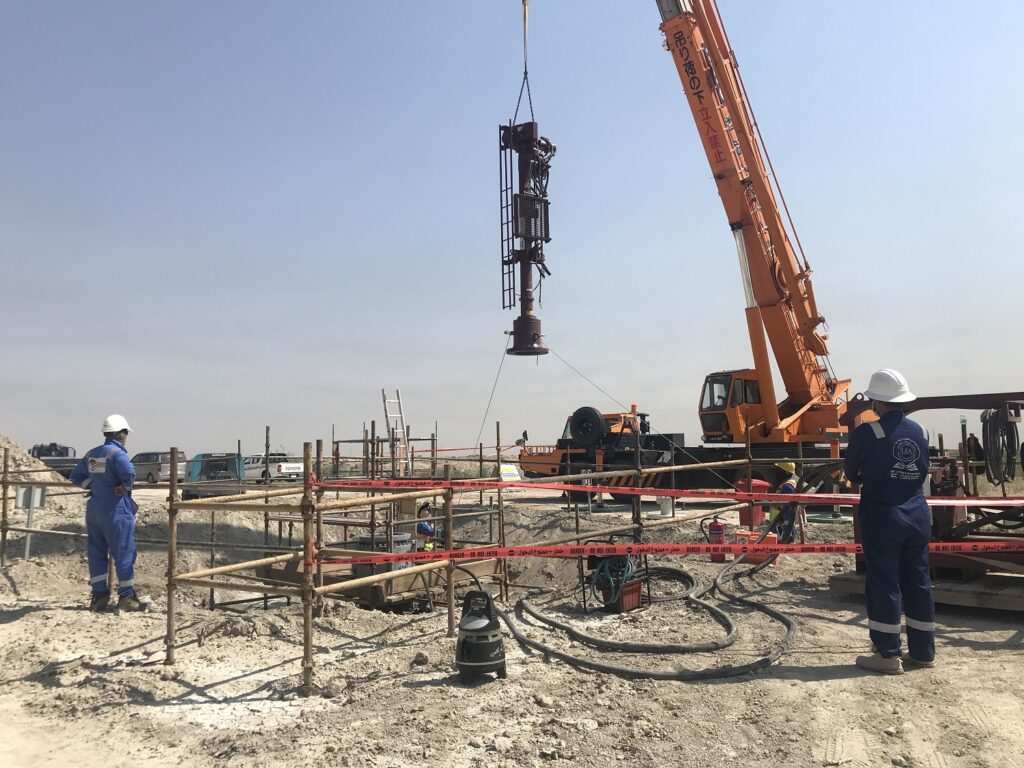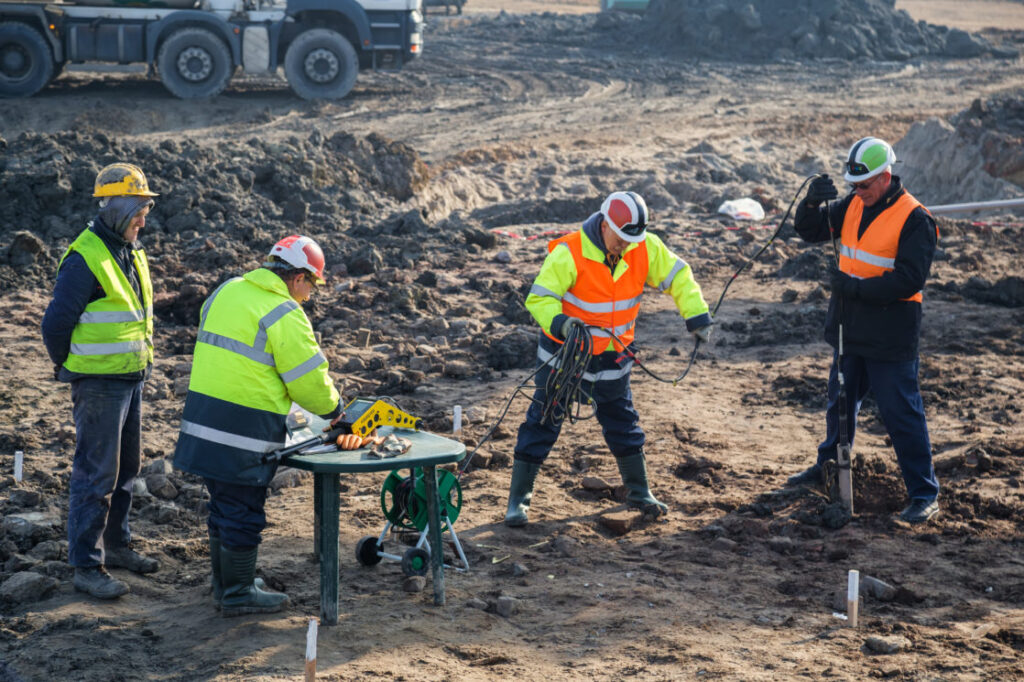This article is a comprehensive guide on how to write a site investigation report. It concerns the factors that may affect the quality of the report; how to present the results of the site investigations; and what the report should contain.

The beginning of any new project often starts with conducting a site investigation on the proposed site. This is so because, a site investigation influences the choice and type of foundation, and method of construction. It can also ultimately affect the design of the superstructure as an economic viable proposition.
Foundation failures are mostly the most daunting and costly to remedy, and rightly so, a damage to a foundation could mean damage to the structure in its entirety. Hence, it is of utmost importance to conduct a detailed soil investigation prior to the commencement of any new development.
The principles and methods of conducting site investigations has been laid in an earlier article titled “Site investigations in Foundations Design.” Here, the focus is on how to present the results of a site investigation into a report. It concerns the factors that may affect the quality of a site investigation report; and what the report should contain.
Site Investigation Report
A site investigation report is basically a culmination of the information gathered on a site during the reconnaissance survey, investigation, testing and soil survey recommendations and the design engineer’s recommendations. Since the report is the property of the client his permission should be obtained for its distribution to invited main and appropriate specialist sub-contractors and any public authority that would be needing the soil data.
The report will contain a mass of information which must be presented in an orderly, easily digested manner and written in clear, unambiguous, good English. Since most of the intended readers are mainly visually orientated, the use of photos, maps, soil profiles, borehole logs and other visual aids is to be recommended as is the tabulation of test results and other information. The report is not a thesis nor a scientific treatise, but a factual report with comments, opinions and recommendations based on the interpretation of the facts from experience. The facts and opinions must be clearly separated. Since the report is likely to be subject to hard and frequent usage it is advisable to bind it between stiff covers rather than merely stapling a mass of A4 sheets. The script, drawings and layout should be checked and re-checked just as carefully as calculations and drawings from the design office.
A recommended procedure for writing a site investigation report is as follows:
- Collect data, categorize it and rough out a preliminary draft.
- Edit the draft and seek methods of visual presentation and tabulation.
- Polish re-draft and check for improvements in presentation, check for typing errors and appearance
Factors Affecting Quality of Report
There are other factors which can affect the quality of the investigation, recommendations and the engineering judgement. Among those which may affect some engineers are:
- Allowing site difficulties to dictate the investigation in an attempt to keep the investigation simple and cheap.
- Lack of recognition that piling and other foundation techniques can be used to economic advantage even on good sites.
- Lack of recognition that some fills, possibly upgraded by ground improvement techniques, can provide an adequate and economic bearing stratum.
- Lack of appreciation that advances in structural design can accommodate relatively high settlements.
- Under-estimation of the importance of the designer, at least, visiting the site during the investigation or dismissal of trial pits as unscientific or outdated.
Sequence of report
Site investigation reports follow the normal sequence of items of engineering reports in having a title, contents list, synopsis, introduction, body of the report, conclusions and recommendations. Lengthy descriptions of tests and similar matters are best dealt with in appendices and the test results tabulated in the body of the report.
The client tends to read the synopsis and recommendations; the main and sub-contractors would concentrate on the body of the report and the design office on its conclusions and recommendations. If the brief imposed such limitations on cost and time allocation for the investigation that the engineer was not able to carry out an adequate survey this should be tactfully pointed out. It should also be made clear in such cases that the engineer’s conclusions and recommendations are qualified – this is unfortunately advisable in today’s present litigations’ climate.
Site Description
This, as far as possible, should be given on small-scale plans showing site location, access and surrounding area. The proposed position of the buildings and access roads should be shown. The site plan should also show the general layout and surface features, note presence of existing buildings, old foundations and previous usage, services, vegetation, surface water, any subsidence or unstable slopes, etc.

Written description of the site exposure (for wind speed regulations) should be given together with records of any flooding, erosion and other geographical and hydrographic information. Geological maps and sections should, when they are necessary, be provided, noting mines, shafts, quarries, swallow holes and other geological features affecting design and construction. Photographs taken on the site, preferably colour ones, can be very helpful and should be supplemented by aerial photographs if considered necessary.
Ground Investigation
The ground investigation section should cover the following:
Background Study and Location of Holes
This should give a full account of the desk-top study, examination of old records, information from local authorities, public utilities and the like, and the field survey. It should detail the position and depth of trial pits and boreholes, equipment used and in situ testing and information.
Boreholes, trial pits and soil profiles
This section will be mainly a visual presentation of the logs and profiles together with colour photographs of the trial pits. Where possible, written information should be given in note form on the soil profiles.
Soil tests
This should list the site and laboratory tests drawing attention to any unusual, unexpected or special results. The results of the tests should be tabulated, for ease of reference, and diagrams of such information as particle size distribution, pressure–void ratio curves and Mohr’s circles should be given. If such form of presentation is not fully adequate, then test descriptions and results should be given in an appendix.
Presenting the Results
This must give details of ground conditions, previous use of site, present conditions, groundwater and drainage pattern. The tests must give adequate information to determine the soil’s bearing capacity, settlement characteristics, behaviour during and after foundation construction and, where necessary, its chemical make-up and condition.
Recommendations
This is both comment on the facts and also opinions based on experience; however, the difference should be made clear. Since the discussion is usually a major part of the report it should be broken down into sections for ease of reference and readability.
The first section should briefly describe the proposed main and subsidiary structures and their loading, a description and assessment of the ground conditions and the types of appropriate foundations.
The second section should advise on foundation depths, pressures, settlements, discuss alternatives giving advantages, disadvantages and possible problems keeping in mind cost and buildability considerations.
Typical main recommendations are:
- Safe bearing capacities at various depths, estimates of total and differential settlement and time-span of settlement.
- Problems of excavation (fills, rock, water ingress, toxic and combustible material).
- Chemical attack on concrete and steel by sulfates and chlorides or acids within soil.
- Flotation effect on buoyant or submerged foundations.
- Where the proposed structure houses plant which could vibrate or impact shock the soil, the effect on the soil must be assessed.
- Details of any necessary geotechnical processes to improve the soil’s properties.
- Where piling is necessary, information must be given on founding level, possible negative skin friction, obstructions, appropriate type and installation of piles and the effects of piling on adjacent constructions and existing buildings.
- Where a foundation is subject to lateral loading, the magnitude and position of the loading must be given together with the skin friction between the soil and the passive resistance of the soil.
- Where retaining walls are required, information is needed on active pressure, passive resistance, surcharge, factor of safety against slip circle failure, possible landslides or slips.
- Where road construction is involved requiring CBR values, etc., though this is outside the scope of this book.
The final section should give firm recommendations on the foundation type or types to be adopted.
Also see: A Background to Piling
Sources & Citation
Curtin W.G., Shaw G., Parkinson G.I., Golding J.M, and Seward N.J (2006) Structural Foundation Designer’s Manual. 2nd ed. Blackwell Publishing.
Tomlinson M. and Woodward J. (2007) Pile Design and Construction Practice 5th ed. Oxford, UK: Taylor and Francis Group
